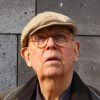Claes Oldenburg

Claes Oldenburg
Claes Oldenburgis an American sculptor, best known for his public art installations typically featuring very large replicas of everyday objects. Another theme in his work is soft sculpture versions of everyday objects. Many of his works were made in collaboration with his wife, Coosje van Bruggen. Van Bruggen died in 2009 after 32 years of marriage. Oldenburg lives and works in New York...
NationalitySwedish
ProfessionSculptor
Date of Birth28 January 1929
CityStockholm, Sweden
CountrySweden
Judson Church was a very important place because they believed in art. They also took care of drug addicts. Without the Judson, nothing could have happened.
I went back to the Art Institute, then spent the summer at the Ox-Bow School in Saugatuck, Michigan. That's what really awakened me. I made a lot of oil paintings and my first performance.
I knew I had to take my ambition more seriously, so I enrolled at the Art Institute of Chicago. Then, in the fall, I went on a tour of my own. I didn't go to New York because that was too well known for its art scene.
The art world was very small and the people got together at parties. There was less commercialism.
Andy [Warhol] was on the scene, but he wasn't an artist at first; he was more an illustrator. He was always surrounded by about ten people who worshipped him. He'd go to a party and they would all come along. But he was drawing shoes and that sort of thing.
Duchamp is known for calling a thing art, rather than making it. A lot of that is picked up in pop art, too.
Mine was not pop art. I maybe started with a subject, but I changed the subject.
I don't do abstract art because I don't find it as interesting as I do subjects and depictions.
I am for an art of things lost or thrown away. . . I am for an art that one smokes like a cigarette. . . I am for an art that flutters like a flag.
I am for the art of underwear and the art of taxicabs. I am for the art of ice cream cones dropped on concrete.
If I didn't think what I was doing had something to do with enlarging the boundaries of art, I wouldn't go on doing it.
I am preoccupied with the possibility of creating art which functions in a public situation without compromising its private character of being antiheroic, antimonumental, antiabstract, and antigeneral. The paradox is intensified by the use on a grand scale of small-scale subjects known from intimate situations--an approach which tends in turn to reduce the scale of the real landscape to imaginary dimensions.
I am for an art that tells you the time of day, or where such and such a street is. I am for an art that helps old ladies across the street.
Art is a technique of communication. The image is the most complete technique of all communication.